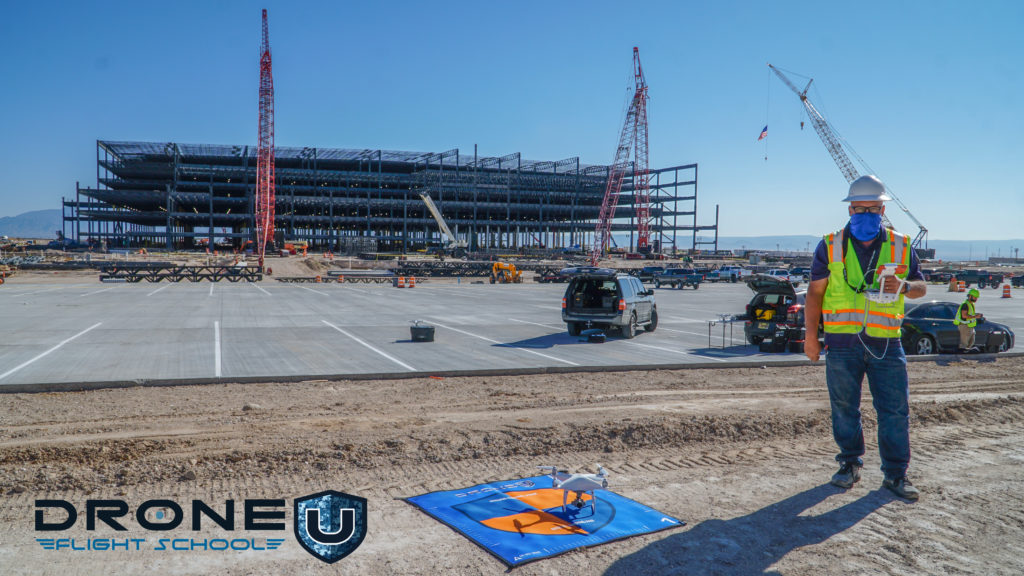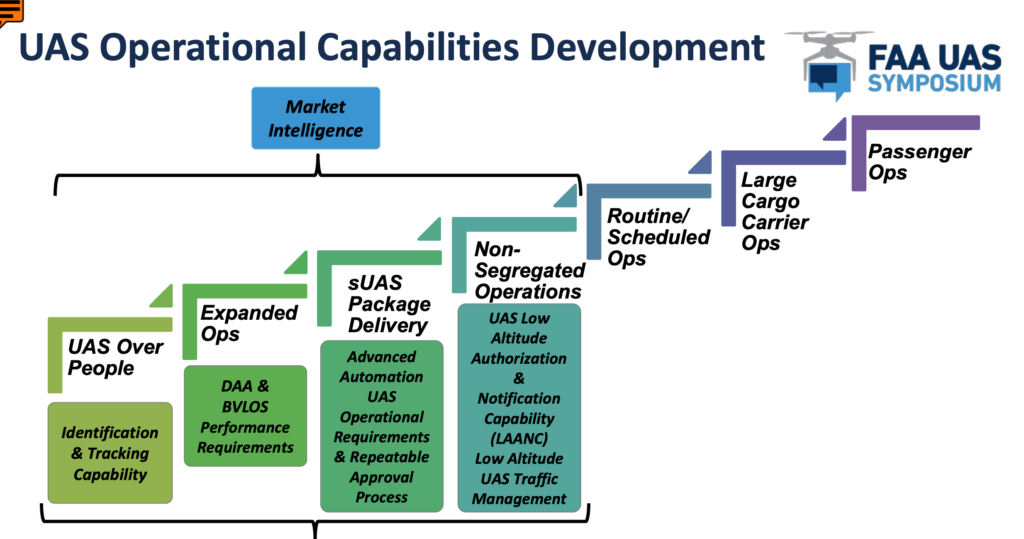
In this article, we’re going to dive headfirst into the year-wise key changes in Part 107 rules.
Just as we thought flying drones would be harder, now it is even easier. New rule changes to Part 107 will make common commercial jobs much easier. Part 107 pilots are excited, they no longer have to file night waivers, over people waivers, or take recurrent tests.
The new rule changes to Part 107 make the life of a drone pilot much easier. The FAA did release the final Remote ID guidelines, albeit they will not be implemented until 2023. This article will focus on explaining the changes to Part 107 outside of Remote ID.
March 2021: Changes in Part 107 Rules
Removed: Part 107 Recency Test
- Replaced with: Part 107 Recurrent Training
- Note: If you need to renew your 107 between now and March 1, 2021, just wait for the implementation of the 107 recurrent training portal.
- If you took the online recurrent test during 2020, just take the new recurrent training offered on March 1st, 2021.
- Veteran Pilots: Note this will make forgetting information easier. Make sure to stay on top of your info by flying. Fly often and in numerous environments. Challenge your knowledge at home and stay involved with a community.
Removed: Need for Night Time Waivers
As of March 2021, you will no longer need to apply for a night waiver to fly beyond civil twilight.
- Drone pilots will still need to attach a strobe for civil twilight flights into the night. Remember they must be visible for 3 statute miles. Remember to place the unit on the top of the aircraft, not the bottom so other pilots can see you.
- Instead of filing for waivers, pilots will be trained on Night Time Operations questions during their recurrent training.
- Thank You to the FAA for recognizing Drone U as the Flight School that was responsible for helping most pilots acquire their night-time waiver. Almost 1,438+ pilots acquired their waiver with our night time waiver video. Albeit, we are thrilled to see the FAA implement these new drone rules under 107.
New Part 107 Pilots Will Have More Part 107 Questions
Pilots who wish to turn their passion into profit will face new questions on the Part 107 drone exam. New drone rules from Part 107 increase the exam question pool. Drone pilots familiar with the night waiver will recognize these new questions, as these issues must be addressed in night time waivers.
Topics that you will be tested on include:
- Night Illusions, Limited Depth Perception, and solutions
- Aircraft Lighting Requirements
- Landing and Takeoff Requirements
- Crew Requirements
- Aircraft Avoidance Protocols and Emergency Maneuvers.
Our Part 107 Material is being updated, but the FAA is not releasing the new questions until March. Be aware of flight schools marketing they can teach you this new material before March 2021.
March 2023: Changes in Part 107 Rules
Removed Part 107 Flight Over People Waivers
Another new Part 107 drone rule eliminates the need for the flight over people’s waivers. Avid drone pilots will remember our Podcast, foreshadowing what was to come with the flight over people, and we were not that far off.
As of March 2023, the FAA will have 4 categories to fly over people. These categories represent different sizes of drones and what is possible for each aircraft. As of right now, a DJI Mini 2 aircraft, with propellers could fly over people without any additional nod or approval from the FAA. Yet, Mini 2 would have to broadcast RID to work, which we believe DJI will update Occusync to work.
Categories of aircraft that can fly over people include:
Category 1: Aircraft weighing less than .55lbs and has prop cages+ RID ready.
- No FAA-accepted Means of Compliance (MOC) or Declaration of Compliance (DOC) required
Category 2: The drone must not cause 11 lbs of Kinetic Energy upon impact with a human. If you’re wondering if your drone will comply with this rule, check out this kinetic energy calculator. Did this 11 lbs of kinetic energy come from the Virginia Tech tests, which showed that most drones are safe to fly over people… at least the small ones?
- Must have prop cages
- Requires FAA accepted means of compliance and FAA declaration of compliance required.
Category 3: The drone must not cause more than 25 lbs of Kinetic Energy upon impact with a human.
- Must have prop cages
- Requires FAA-accepted means of compliance and FAA-accepted declaration of compliance
Category 4: Aircraft must have an airworthiness certificate issued under Part 21 of FAA regulations
Added Flight Over Moving Vehicles Subject to Categories of Flight Over People
- The FAA addressed the numerous concerns of flight over moving vehicles as most of the industry stated that routine operations were indeed safe, with specific circumstances. The FAA will allow routine flight over moving vehicles, but not sustained flight. The drone pilot must be transversing unless the operation is in a “restricted access area.”
- The catch: In order to have routine flights over moving vehicles, your drone must meet the requirements of the categories stated above.
- Once again, this showcased the value of a drone like the Mini 2. Which will be able to fly over moving vehicles without any FAA-accepted means of compliance.
The FAA made it clear years ago what their plan was for the drone industry. Luckily, they are listening to the industry and moving forward. For that, we are grateful to the FAA.
During our podcast of the 2017 FAA symposium, we mentioned how the FAA wants to make the flight over people, RID, and night time operations happen soon. These drone operations are enablers for more advanced regulatory systems to empower advanced drone operations. Advanced operations like beyond-visual-line-of-sight drone delivery.
Visit the “FAA Part 107 Practice Test” article to get a set of sample questions for the FAA 107 exam.

For the full-text explanation of the new drone-related rules to Part 107, see the list of FAA-provided resources below.
FAA Resource Documents explaining new Part 107 Rules for 2021 – 2023







Add Your Comment